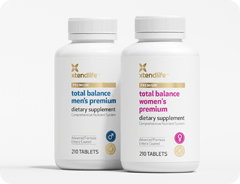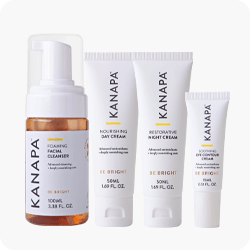And while that’s not to say heavy metal music might not have been detrimental to your hearing in your rebellious teenage years, it’s probably the heavy metals in our water, in the air we breathe and in the food we eat that are more serious than hanging out at too many loud concert venues.
While there are more than 50 elements that can be classified as heavy metals, 17 of them are considered toxic, and there are five that are considered particularly troublesome.
Heavy metals including copper, lead, arsenic, mercury and cadmium can turn up in a simple glass of drinking water, and if you’re following what you believe to be good advice about how much water you ought to be drinking, your body could be overloaded with toxic metals. (Ref. 1)
A tale of two coppers
While copper is an essential element – vital to maintaining blood volume and providing cells the energy they need – too much copper can be a potentially deadly problem.
Levels can be high if you have copper pipes in your home, or you live near a copper smelting plant, which will likely result in too much copper in your soil, and therefore in any plants you grow in that contaminated earth. Women who have copper IUDs may also be at risk.
The United State Environmental Protection Agency has yet to classify copper as a carcinogen, but high levels of copper can cause simple symptoms including nausea, vomiting and diarrhea, and occasionally more serious problems including liver and kidney damage. (Ref. 2)
Copper exposure can also impact birth weight, as studies have shown high copper levels can slow fetal growth in animals living in copper contaminated regions.
No love for lead
While lead poisoning first gained attention in the 1970s, when high levels of lead showed up in kids who were exposed to paint chips in dilapidated, older buildings, changes in paint formulas haven’t erased the problems with lead.
According to the Mayo Clinic, lead poisoning is slow, and can take months or even years to show symptoms. Those symptoms, however, can be serious, and potentially deadly. For children, lead poisoning can impact both mental and physical development, forever impacting future opportunities.
Since lead poisoning can be caused not only by paint chips, but also contaminated dust in older buildings, adults are also at risk, especially during home renovation projects. Those who work with batteries or in auto repair shops can also be exposed to dangerously high levels of lead. (Ref. 3) Lead is also found in some lipstick and cosmetic products.
Arsenic: More than a murder weapon
While arsenic brings to mind murder mysteries and stories - arsenic poisoning is no joke.
According to the American Cancer Society, arsenic is a known cancer-causing agent, and difficult to avoid since the steel-gray metal that can also be combined with other compounds including carbon is found in water, soil, air, plants and livestock.
Agriculture and industry are two of the biggest arsenic producers, and it can show up in anything from pressure-treated wood to shellfish. (Ref. 4)
This workplace hazard - used in pesticides, hide tanning preservatives and glass manufacturing among other industries – can also cause a variety of different health problems other than cancer.
Arsenic exposure can cause stomach aches, nausea and vomiting, diarrhea, muscle weakness, tingling and numbness in the hands and feet, rashes on the skin and bruising from damage to blood vessels. It can also be fatal, making it a particularly popular murder weapon in 19th century England. (Ref. 5)
Mercury and what we now know
There was a time when mercury was contained to thermometers, tooth fillings or that tiny silver slightly fluid ball that science teachers showed off along with a warning about how dangerous it was to play with.
Now, however, mercury is virtually everywhere, especially in water and the fish that live in those waterways, leading to recommendations on limiting fish consumption in order to prevent mercury poisoning.
The risks of mercury poisoning can be high, according to experts. Not only can mercury exposure impact the brain, heart, kidneys, lungs and immune system, it can also impede the development of the nervous system in young children, causing irreversible problems.
Symptoms can include visual, speech and hearing impairments, difficulty walking, muscle weakness and death. (Ref. 6)
The curse of cadmium
Considered more dangerous than both mercury and lead, cadmium is at the top of the list when it comes to toxic heavy metals (and raises questions about why no metal band ever took it as a name.)
High levels of this toxic heavy metal can concentrate in the liver and kidneys, and may contribute to serious conditions including heart disease and diabetes. (Ref. 7)
Cadmium can turn up not only in cigarette paper (do you really need another reason to quit smoking?), as a coating for other metals and in fungicides, all of which can pollute water, air and food during production.
Cadmium is especially common in rice and wheat, which are often grown in soils contaminated by cadmium-contaminated fertilizers and irrigation water, as well as in processed foods, canned foods and cola-type beverages.
Cadmium has been linked to cancer and nerve damage, as well congenital problems including birth defects, learning disorders and other problems that are escalating in children.
Step up your detox regime
Before you panic over the high levels of toxic heavy metals now roaming around wreaking havoc in your body, know there are ways to help detox and support your body’s natural ability to manage the daily removal of trace amounts of toxins in your system.
Not only is Xtendlife’s Zupafood Greenz deigned to give you a healthy boost of energy, it also includes ingredients that help support the body’s ability to remove toxins, while nourishing your organs.
While the ingredients in Zupafood Greenz work in synergy to help the body detox, two key ingredients – organic chlorella and Kiwifruit - work to support digestion, helping your gut flora to manage every day toxins that linger in the digestive system, while boosting energy and improving feelings of health and well-being.
References:
- http://www.freedrinkingwater.com/water-education/quality-water-heavymeatal.htm
- http http://bmb.oxfordjournals.org/content/68/1/167.full://www.globalhealingcenter.com/natural-health/dangers-of-copper/
- http://www.mayoclinic.org/diseases-conditions/lead-poisoning/basics/definition/con-20035487
- http://www.cancer.org/cancer/cancercauses/othercarcinogens/intheworkplace/arsenic
- http://www.newyorker.com/magazine/2013/10/14/murder-by-poison
- http://www.medicinenet.com/mercury_poisoning/article.htm
- http://www.arltma.com/Articles/CadmiumToxDoc.htm


 Supplements
Supplements Bundles
Bundles









